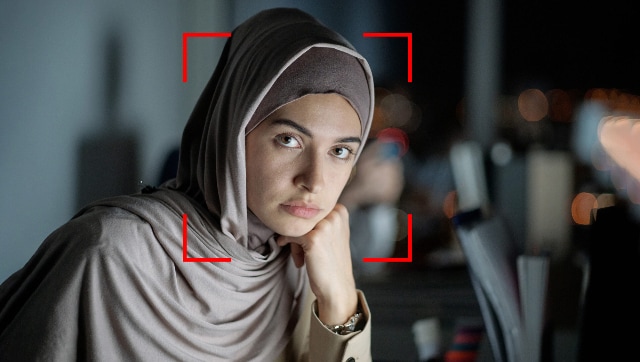Written by Stefan van der Berg: Ministry Leader dia-LOGOS
The dark side of facial recognition technology, which privacy and human rights advocates have long warned about, is becoming increasingly apparent. This issue has recently come to light in Iran the world’s only Shiite Islamic theocracy. However, China's exportation of surveillance products and expertise is also contributing to the problem.
In September 2022, protests erupted in Iran following the death of Mahsa Amini, a Kurdish woman from the northwestern territories of the country. The 22-year-old was picked up by the Morality Police for allegedly showing too much hair from under her headscarf. While Iranian officials claimed she died from a heart attack unrelated to police actions, the incident sparked widespread resistance against the repressive regime. Protests took place in major cities, including Tehran, as the government brutally cracked down on those protests, killing hundreds of people and jailing thousands, according to rights groups.
Many Muslim women around the world choose to cover their hair for religious or traditional reasons, including in Iran. But in this country, the hijab has also been a contentious political issue for nearly a century.
Now, 40 years after the Islamic Republic made it a law in 1983, the wearing of a hijab has become a powerful symbol with different meanings. The regime sees it as representing its own legitimacy. "For the government to move away from the enforcement of their interpretation of Islamic law would be an acknowledgment by the political establishment that their legitimacy has waned, if not is bankrupt," said Sanam Vakil of Chatham House.
What began as anger at the hijab law grew into a bigger movement as Iranians said they were fed up with the regime's corruption, economic mismanagement, and oppression of its citizens.
Chief Justice Gholamhossein Mohseni Ejei of Iran's judiciary issued a statement declaring harsh punishment for women who resist the hijab laws. He emphasized that removing one's hijab is seen as an act of enmity towards the Islamic Republic and its values, and those who engage in such acts will be punished without mercy.
Now, algorithms are being employed to identify and apprehend women who do not adhere to the requirement of wearing a head-covering hijab, as well as individuals who protest against the newly imposed strict regulations. The government's Headquarters for Promoting Virtue and Preventing Vice is specifically monitoring the country's public transportation system cameras.
This technology is also being used to survey and track the movements of women, as well as to suppress dissent. The deployment of facial recognition technology to enforce the hijab law is yet another method employed by the Iranian government to exert control over women. This technology enables constant monitoring of women's movements, identification, and subsequent arrest of those who fail to comply with the law, consequently instilling a climate of fear and intimidation, severely limiting women's ability to exercise their basic rights.
The use of facial recognition technology to suppress dissent is an alarming development that affects the entire population, but women are particularly targeted. The technology restricts their movement and freedom, preventing them from going to desired places or dressing as they choose, contributing to their treatment as second-class citizens, and perpetuating gender segregation
A Christian Perspective
Disregard for women is nothing new in Iran. According to one study, Iran holds the "world record" for domestic violence against women. A staggering two out of every three Iranian women suffer domestic violence in their lifetime, double the global average, says the Research Centre on Women and Family in Tehran. More than one in every 20 married women in Iran has experienced "near-death" domestic violence or feared for her life. It is estimated that half of all murders of women in Iran are at the hands of their husbands or immediate relatives—gender-related killings known as "femicides."
Despite this and the government’s strict cultural protocols on women, many seek to find self-worth and freedom through Christianity and women are playing a crucial role in the growth of the Church in Iran.
Here are three ways in which this is happening:
As Converts
While official reports still claim that 99.4 percent of Iranians practice Islam, a recent survey found that just 40 percent actually identify as Muslim. An even larger number—about 47 percent—said they were “nones,” atheists, spiritual, agnostic, or humanist. Another 8 percent claim Zoroastrianism, an ancient Persian religion. Women are very open to the Gospel. Often with their self-worth in tatters, many women in Iran are on the edge of despair. In such despair, women are open to any message that gives them hope.
As Evangelists
About 20 years ago, the number of Christian converts from a Muslim background was between 5,000 and 10,000 people. Today, that number has grown to between 800,000 and 1 million people. According to Operation World, Iran has the fastest-growing evangelical movement in the world. Being an evangelist is a natural ministry for women. Iranian women don't just evangelize at home but often, as soon as they come to faith, start witnessing to other women.
As Teachers and Ministers
Over 60% of Iran’s 84 million population is under 30. Church leaders believe that millions can be added to the church in the next few years due to the spiritual hunger among the youth and disillusionment with the Islamic regime. Women are very active in teaching and encouraging in the house churches and often must take spiritual responsibility for house churches.
Amidst the backdrop of the dark implications of facial recognition technology, Christ offers hope for many Iranian women seeking self-worth and freedom.
Through their roles as converts, evangelists, teachers, and ministers, women are playing a significant role in the growth of the Church in Iran. As Iran is a strategic gateway nation, the growing church in Iran will impact Muslim nations across the Islamic world.

